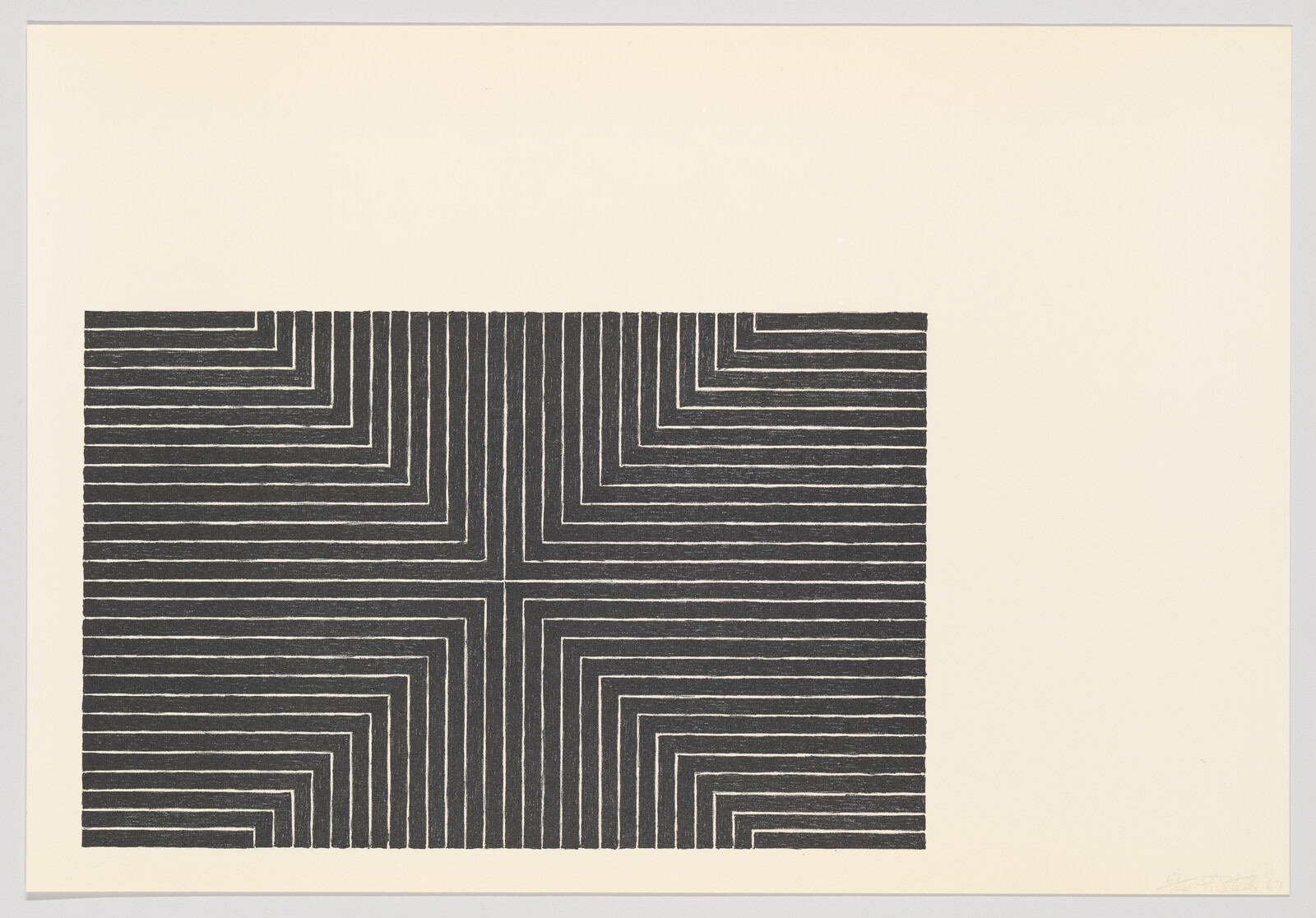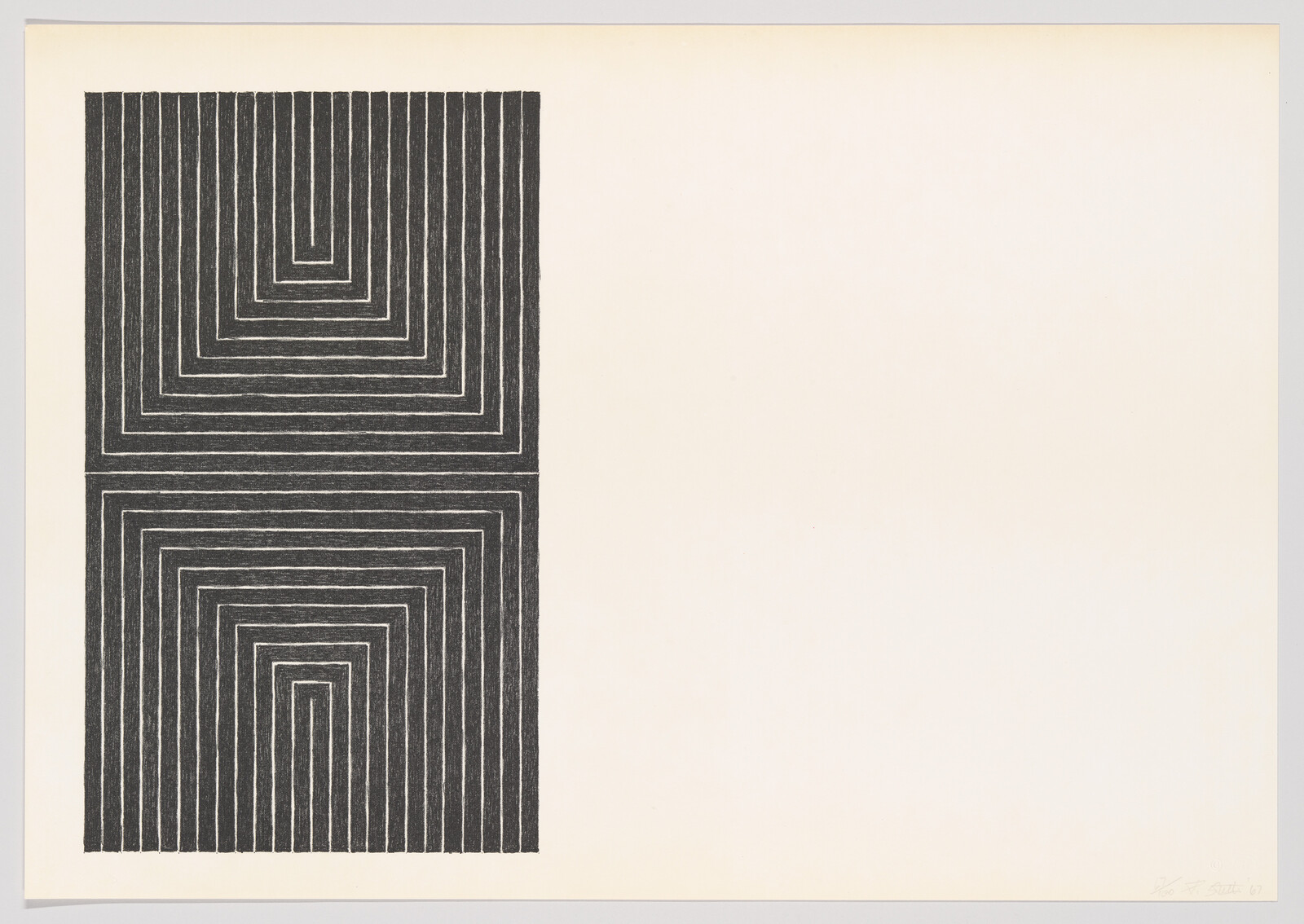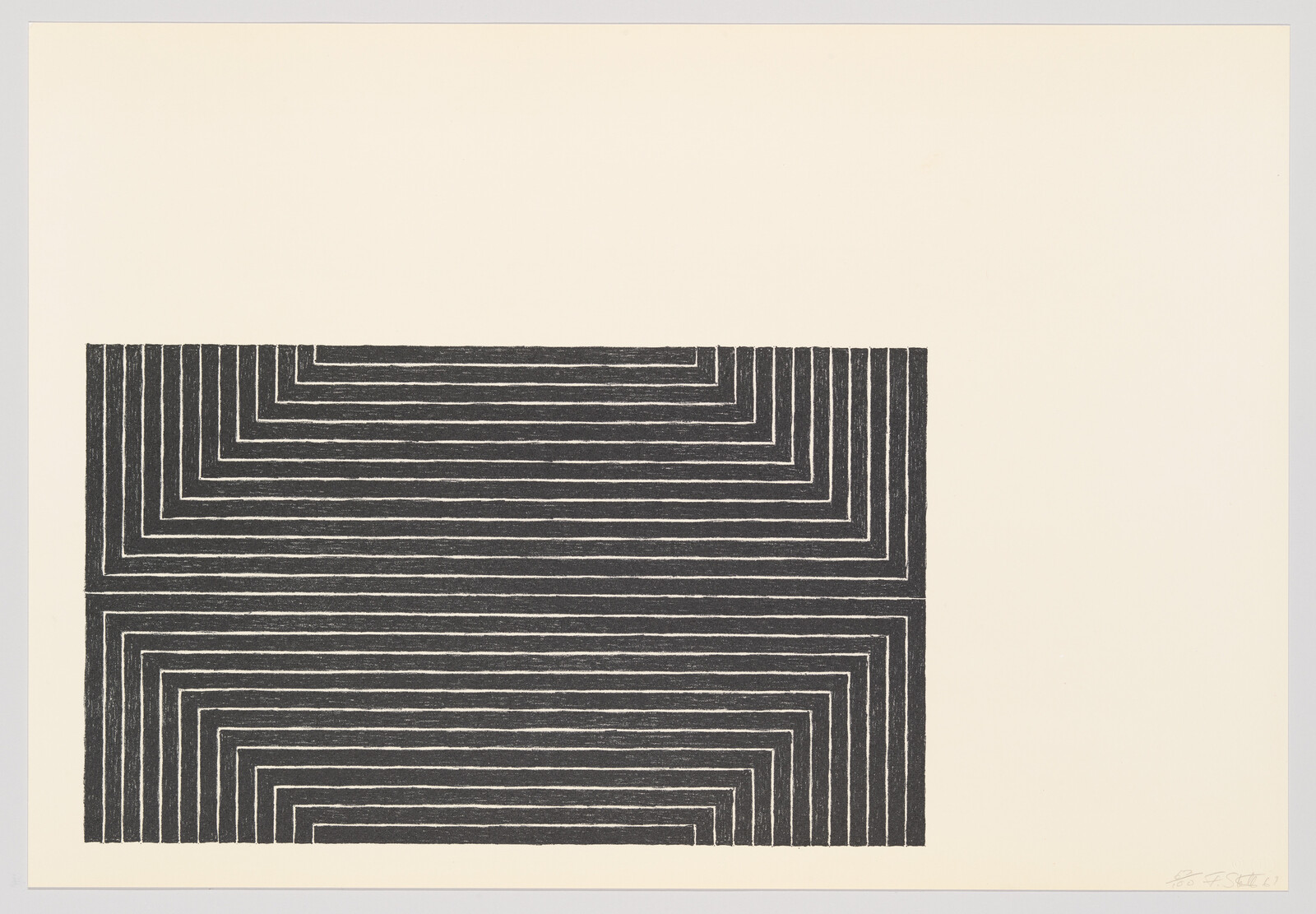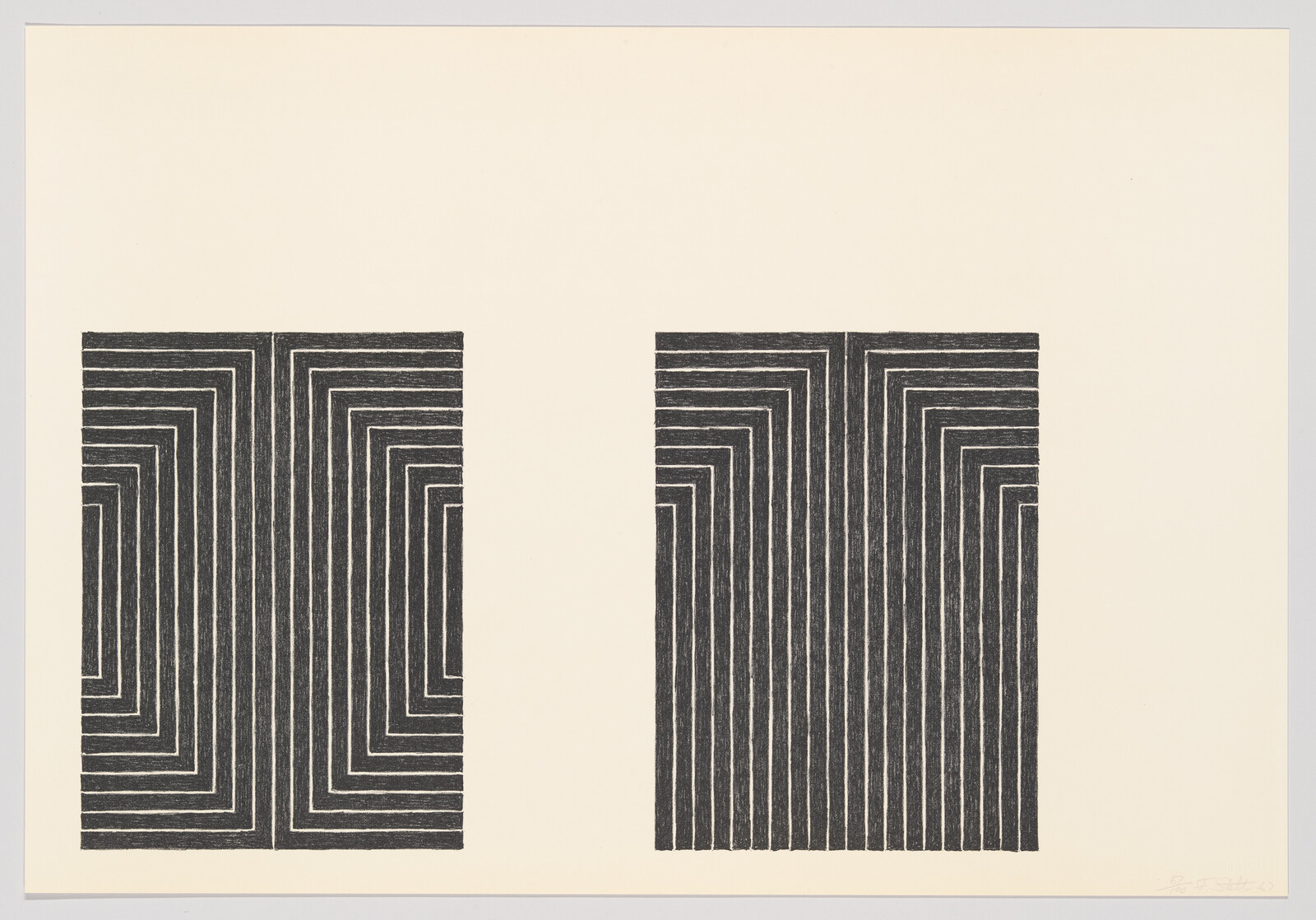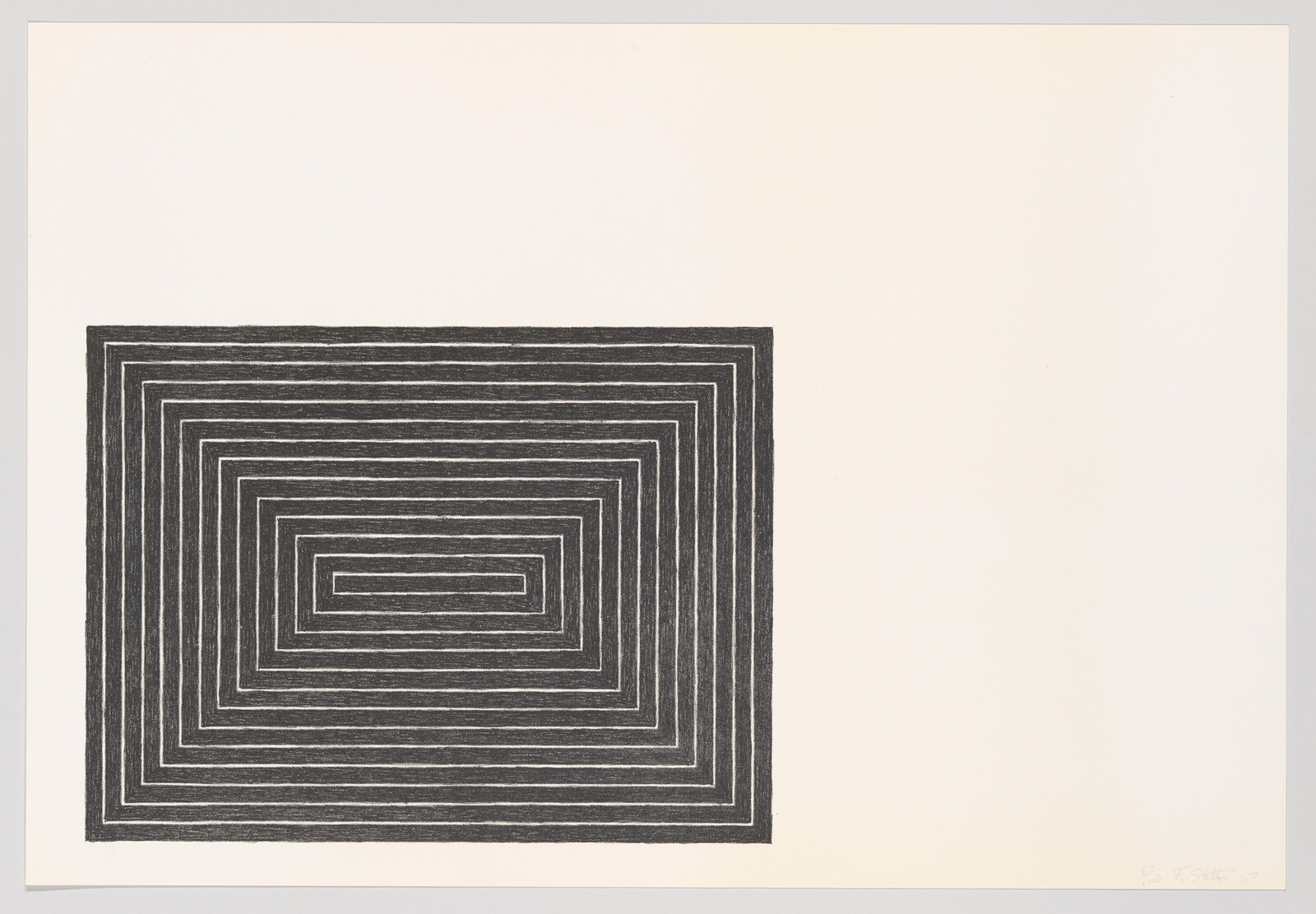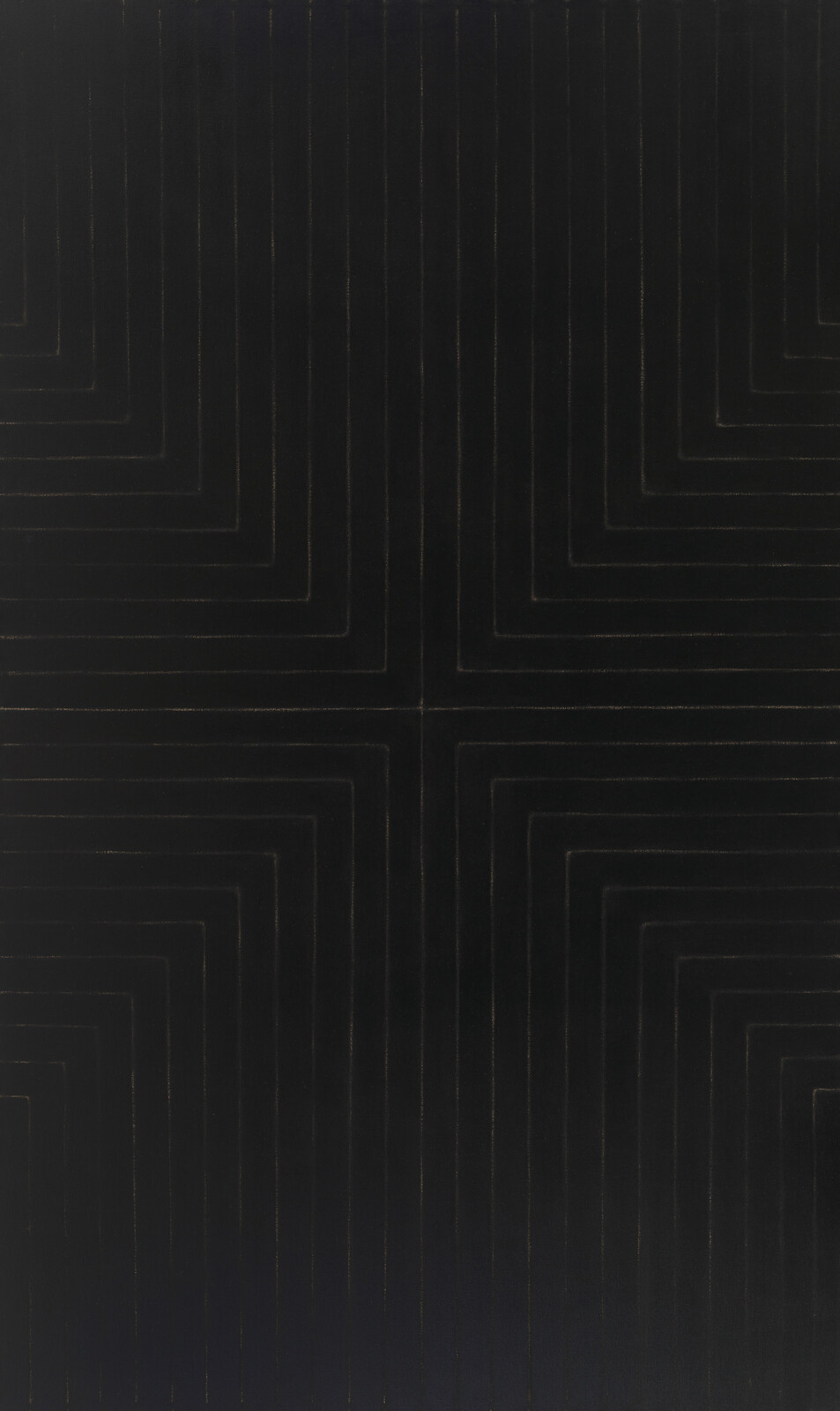Adam Weinberg: Cuando en 1959, el artista Frank Stella mostró por primera vez esta pintura en el Museo de Arte Moderno, el público quedó perplejo ante su austeridad.
Narrator: Adam Weinberg es Director Alice Pratt Brown del Whitney Museum.
Adam Weinberg: Stella respondió: “Lo que ven es lo que ven. Para mí, la pintura es un pincel en una cubeta, que se pone sobre una superficie. Para mí no hay otra realidad que esa”. El artista quería crear obras metódicas, intelectuales y despojadas de pasión. Algunos consideraron que aquello no era sino un repudio de todo lo que le había antecedido, un sistema racional carente de placer y personalidad. Pero otros percibieron que las pinturas negras generaban un aura de misterio y solemnidad.
El título de esta obra, Die Fahne Hoch, significa literalmente “el estandarte izado”. Viene de un himno marcial de la organización de las juventudes nazis. Stella destacó que las proporciones de este lienzo son muy similares a las de las grandes banderas desplegadas por los nazis.
Sin embargo, el contenido de la obra no hace referencia a elementos ajenos a la propia pintura. El diseño se deduce a partir de la forma del lienzo: el ancho de las franjas negras está determinado por el ancho de las barras del bastidor. Las líneas blancas que separan las anchas franjas negras están creadas por áreas angostas del lienzo sin pintar.
